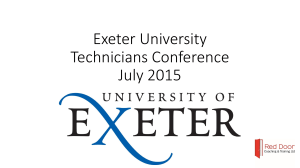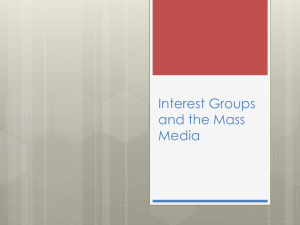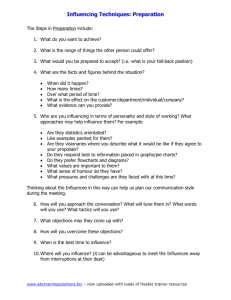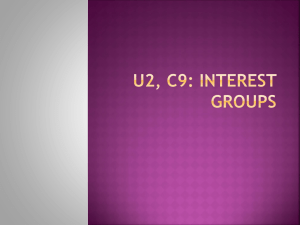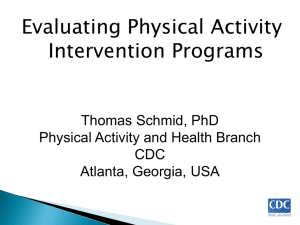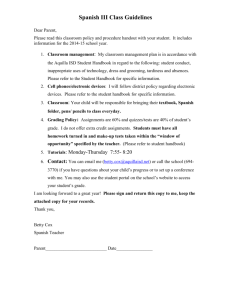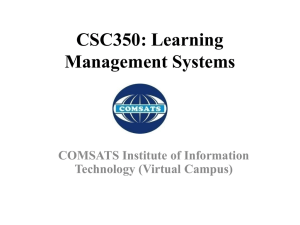Number & Title of Course: ARPL Mixed Use Development, 3 credits
advertisement
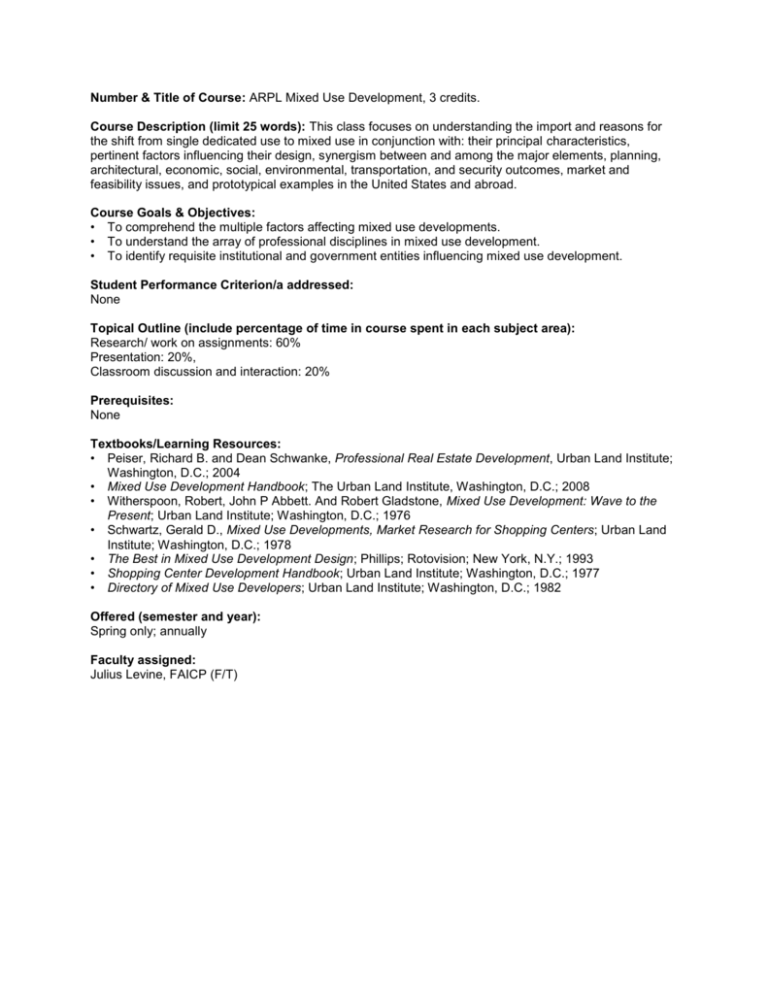
Number & Title of Course: ARPL Mixed Use Development, 3 credits. Course Description (limit 25 words): This class focuses on understanding the import and reasons for the shift from single dedicated use to mixed use in conjunction with: their principal characteristics, pertinent factors influencing their design, synergism between and among the major elements, planning, architectural, economic, social, environmental, transportation, and security outcomes, market and feasibility issues, and prototypical examples in the United States and abroad. Course Goals & Objectives: • To comprehend the multiple factors affecting mixed use developments. • To understand the array of professional disciplines in mixed use development. • To identify requisite institutional and government entities influencing mixed use development. Student Performance Criterion/a addressed: None Topical Outline (include percentage of time in course spent in each subject area): Research/ work on assignments: 60% Presentation: 20%, Classroom discussion and interaction: 20% Prerequisites: None Textbooks/Learning Resources: • Peiser, Richard B. and Dean Schwanke, Professional Real Estate Development, Urban Land Institute; Washington, D.C.; 2004 • Mixed Use Development Handbook; The Urban Land Institute, Washington, D.C.; 2008 • Witherspoon, Robert, John P Abbett. And Robert Gladstone, Mixed Use Development: Wave to the Present; Urban Land Institute; Washington, D.C.; 1976 • Schwartz, Gerald D., Mixed Use Developments, Market Research for Shopping Centers; Urban Land Institute; Washington, D.C.; 1978 • The Best in Mixed Use Development Design; Phillips; Rotovision; New York, N.Y.; 1993 • Shopping Center Development Handbook; Urban Land Institute; Washington, D.C.; 1977 • Directory of Mixed Use Developers; Urban Land Institute; Washington, D.C.; 1982 Offered (semester and year): Spring only; annually Faculty assigned: Julius Levine, FAICP (F/T)



